The Reproduction of Shosoin Treasures
I visited the “Reproduction of Shosoin Treasures" exhibition at the Matsumoto City Museum of Art. As the subtitle of the exhibition states, “Encountering Tenpyo Craftsmanship through the Reproductions of 8th Century Works", it is an exhibition of reproductions of Shosoin treasures.
The exhibition was held at the Nara National Museum from July to September 2020, and then traveled around the country. Matsumoto is the eighth venue of the exhibition.
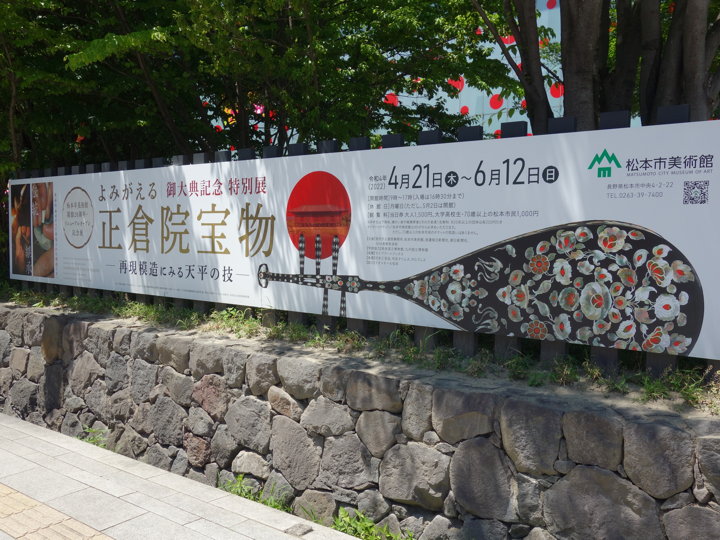
The image of Red Sandalwood Five-String Biwa Lute with Mother-of-Pearl is used on the signboard and in the leaflet. I had hoped to see it.
However, I saw it was written that that the biwa was only exhibited during the first half of the exhibition (until May 15) on the website, so I assumed that it would not be on display during the second half.
I was disappointed to think that I would not be able to see the exhibition when I went there, and tweeted the following.
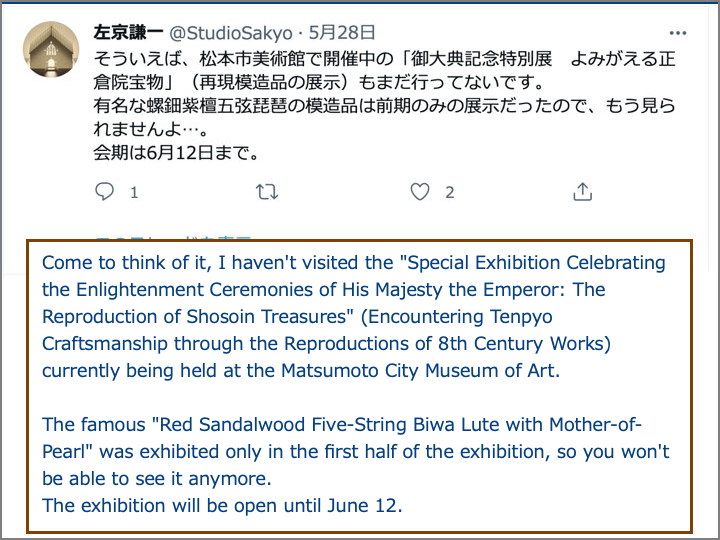
Then the Matsumoto City Museum of Art’s official Twitter found this and told me the following,
“The first half of the exhibition will feature pieces made in the Heisei period, while the second half will feature reproductions made in the Meiji period".
This was the first time I learned that there were two imitations of the five-stringed biwa.
One was made in 1898 and is in the collection of the Tokyo National Museum. The other was produced in 2011-18 and is owned by the Shosoin Office of the Imperial Household Agency.
Knowing that I would be able to see a five-stringed biwa, I gladly went to the Matsumoto City Museum of Art.
At the entrance to the exhibition room, there was this photo corner.
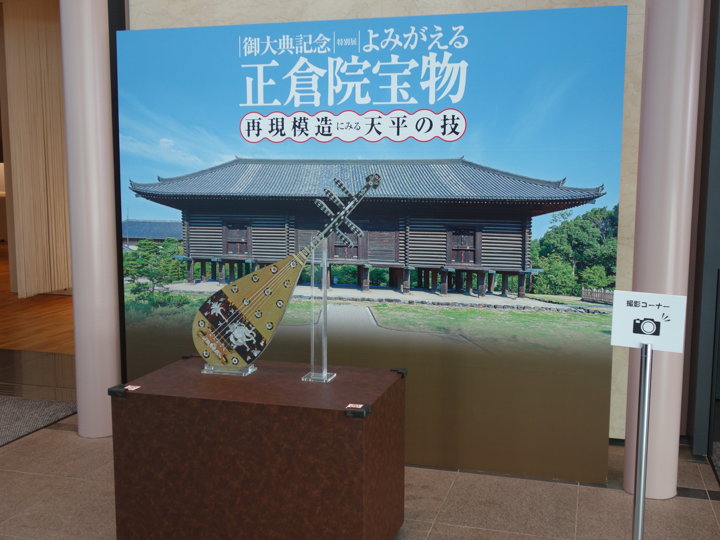
Upon entering the room, I first entered a corner where a guidance video was shown, followed by six sections of the exhibition.
The first section was “Musical Instruments and Gigaku Masked Skits".
The term ”Saigen-Mozo” (reproduction imitation) is used for the first time in this exhibition, and was previously used as “Fukugen-mozo" (restoration imitation). Since the term “Fukugen-Shuri“(restoration and repair) is also used for cultural properties, the term “Saigen-Mozo" was newly used to avoid confusion.
The policy is to use the same materials, the same construction, and the same techniques to reproduce the original appearance of the treasure. Therefore, the exhibits on display are in their original, brand-new condition.
On the wall next to the Meiji-era five-stringed biwa on display, a several-minute video of the production of the Heisei era five-stringed biwa was shown. This was very interesting.
The ebony body is carved with hollows for patterns, and then decorations made of luminous shells and tortoiseshell are inlaid into the hollows. It was interesting to see how the tortoiseshell were painted from the backside.
The second chapter was “Buddhist and Ceremonial Ritual Implements, Offering Boxes, Tables, and Stands".
The “Red Sandalwood Box with Marquetry" is decorated with fine patterns on the edges of each surface of the box. These are not painted, but made by combining thin sheets of ivory, wood (Japanese persimmon, Burmese rosewood, and boxwood), and metal (tin). Each flake is about 0.2 to 0.5 mm thin.
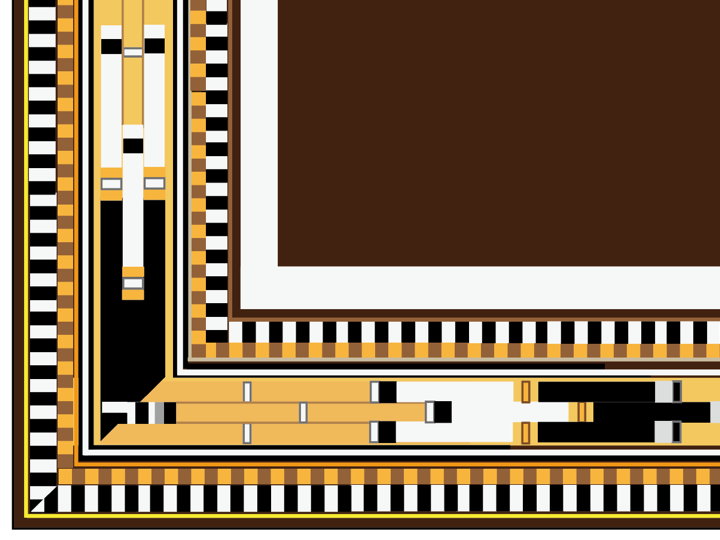
The figure was drawn from a photograph, which of course is not accurate, but the pattern looked something like this. A band with this pattern is attached around the box, and the width of this band is maybe about 1 cm.
In Chapter 3, “Textiles," white silk fabric were exhibited, and it is a daunting task because they were trying to reproduce the thickness of the thread, the density of the weave, and the unevenness of the weave.
The exhibition was very interesting, and I was able to see the six chapter.
Some people may think of the works as “real or fake," but I think it is better to look at them from the perspective of how they were made.
The catalogue explains how each piece was created, and I ended up buying it. I will look through it little by little from now on.
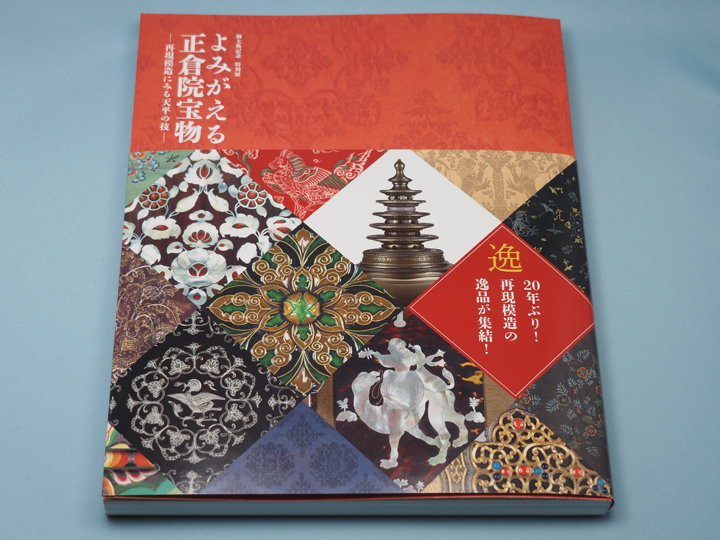
The list distributed at the exhibition also has both Japanese and English versions, which is very helpful for translating my blog into English. I don’t know how to translate the names of the works by myself.
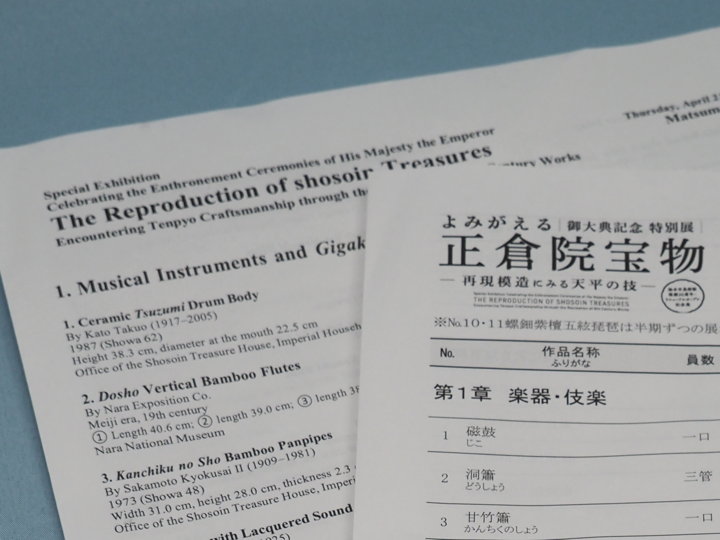
The “Reproduction of Shosoin Treasures" exhibition at the Matsumoto City Museum of Art runs through June 12.
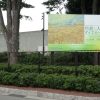


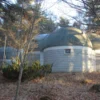
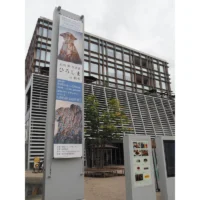


Recent Comments